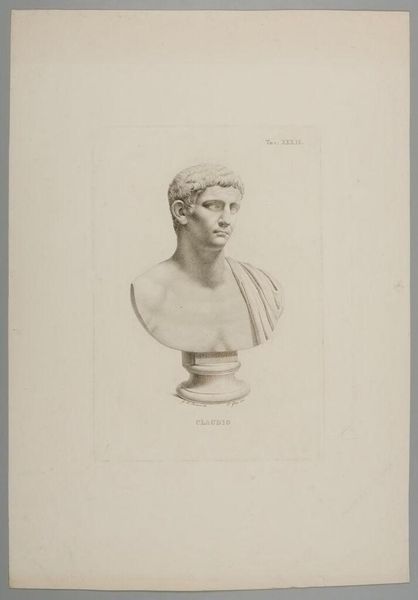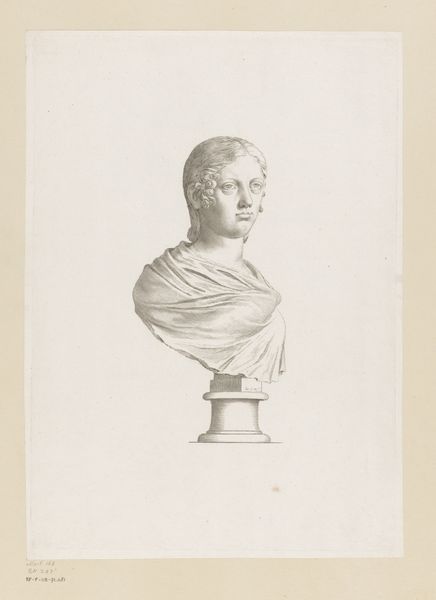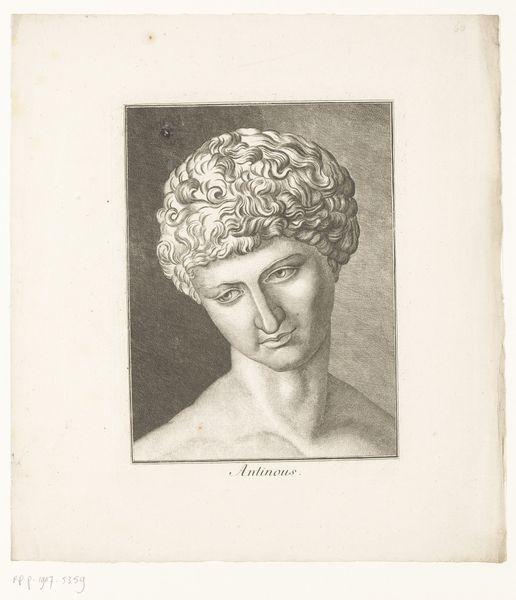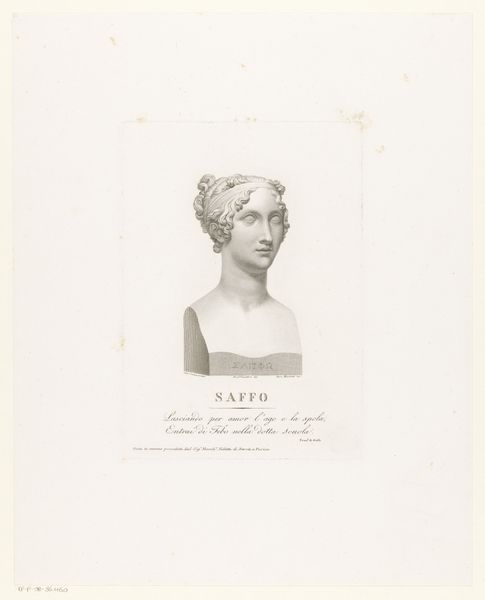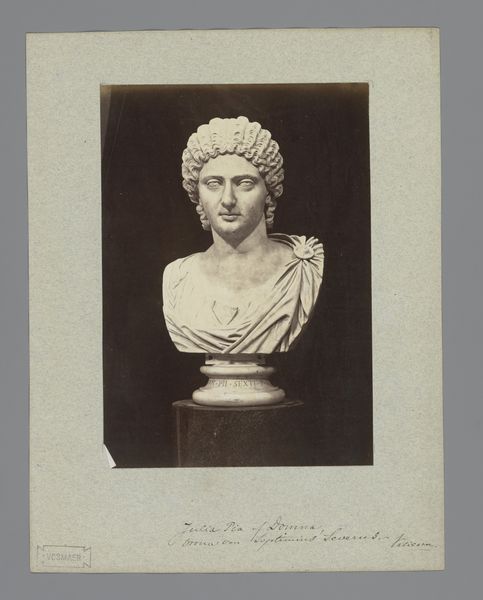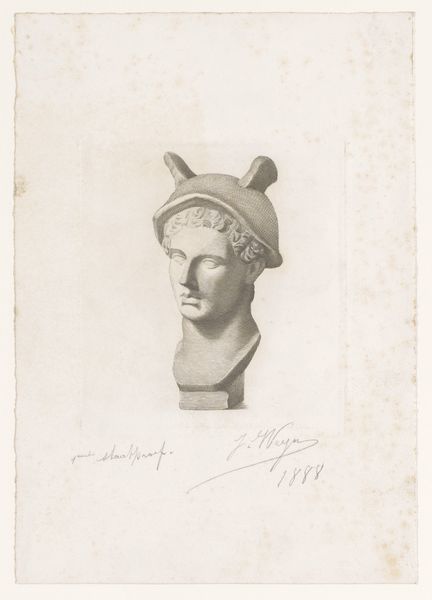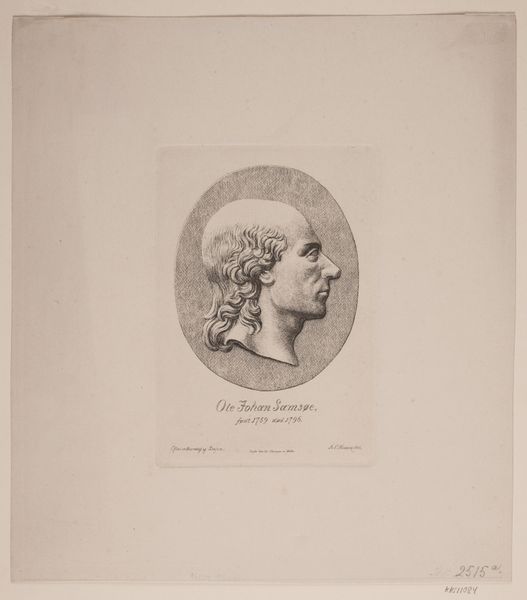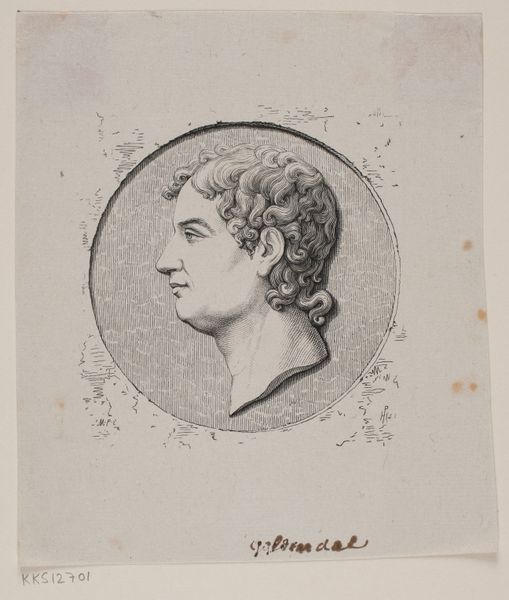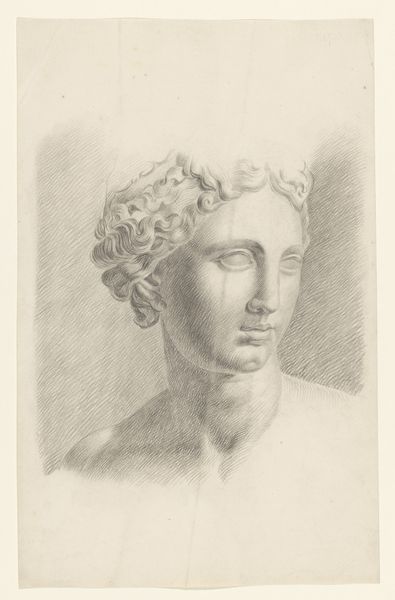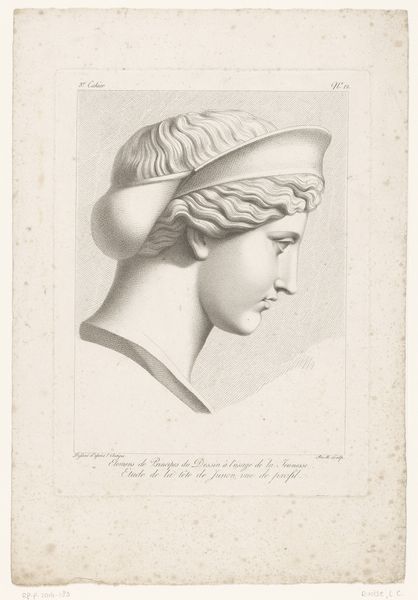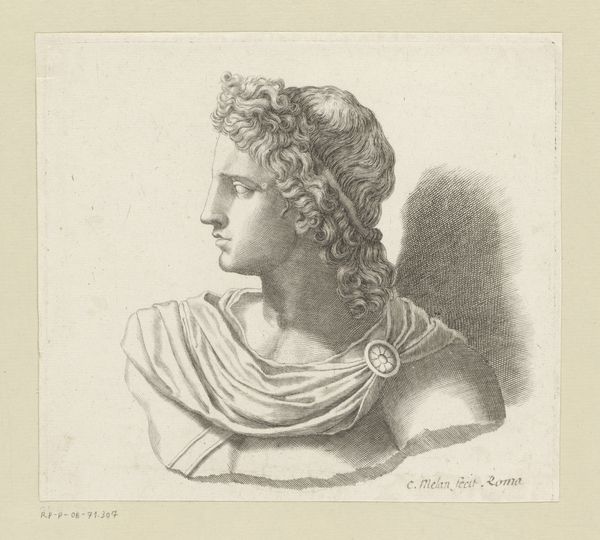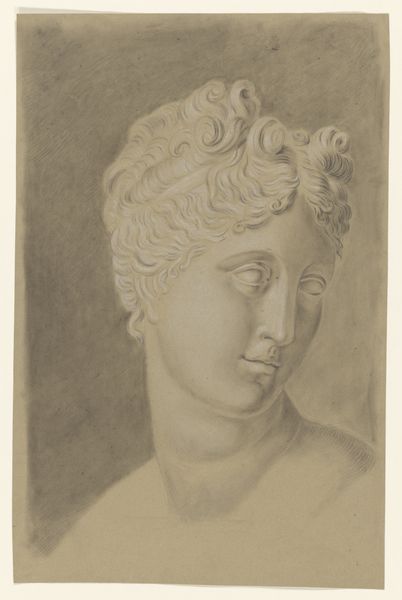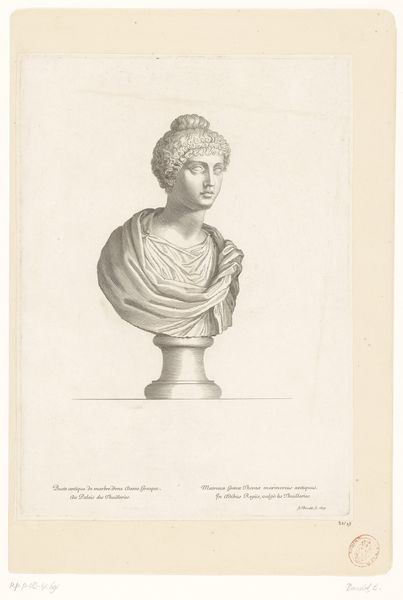
drawing, print, pencil
#
portrait
#
pencil drawn
#
drawing
#
neoclacissism
#
light pencil work
# print
#
pencil sketch
#
old engraving style
#
classical-realism
#
pencil drawing
#
pencil
#
pencil work
Dimensions: height 318 mm, width 247 mm
Copyright: Rijks Museum: Open Domain
Curator: Welcome. Before us is a print titled "Buste van Hippolyte Auger," created around 1820. It’s a pencil drawing reproduced as a print. Editor: First thought? A ghost in the machine! The precise rendering of the face floating above the roughly sketched plinth feels like a clash of realities. Is this a sculpture that became a dream? Or a dream struggling to solidify into stone? Curator: That sense of spectrality is quite evocative. We must remember the era. Neoclassicism drew heavily from idealized forms of the classical world. Reproducing drawings as prints made such imagery accessible to a wider audience, extending its cultural influence beyond the elite. Editor: Yes, but there’s something almost mournful in those eyes, a certain...resignation? This isn't the triumphant, marble-chested hero, but someone…well, thoughtful. Perhaps the "ghost" I'm sensing is Hippolyte himself, peering out from the past. You know, it looks so much like someone drew a sketch in the olden days and copied it, retaining that hand made quality from long ago. Curator: He looks posed for posterity, the serious look we so commonly see back then was a status symbol in portraits like this. Also we must recognize the socio-economic function here; likenesses like this were acts of recording historical memories. Editor: Do you think Hippolyte felt that way when he sat for the original drawing? All this cultural baggage around his head when maybe he just wanted to go get a coffee. It’s so weird, you know, sitting here looking at a drawing of a print based on someone's sculpture and trying to picture him as real. All this historical weight... it makes him harder to actually "see". Curator: It is a curious distance indeed. By appreciating art within a society, we understand more than just brushstrokes or sculpted lines but cultural ideas, technologies of dissemination, and our constantly evolving historical self-conception. Editor: Exactly! So maybe my "ghost" isn’t Hippolyte after all. Maybe it’s us! Ha! Trying to make sense of him, our projections blurring the image even more. What do you think? Curator: Maybe this work invites us to ponder, like yourself, who we were and are in relation to figures such as him, perhaps we could linger here for a very long time...
Comments
No comments
Be the first to comment and join the conversation on the ultimate creative platform.
